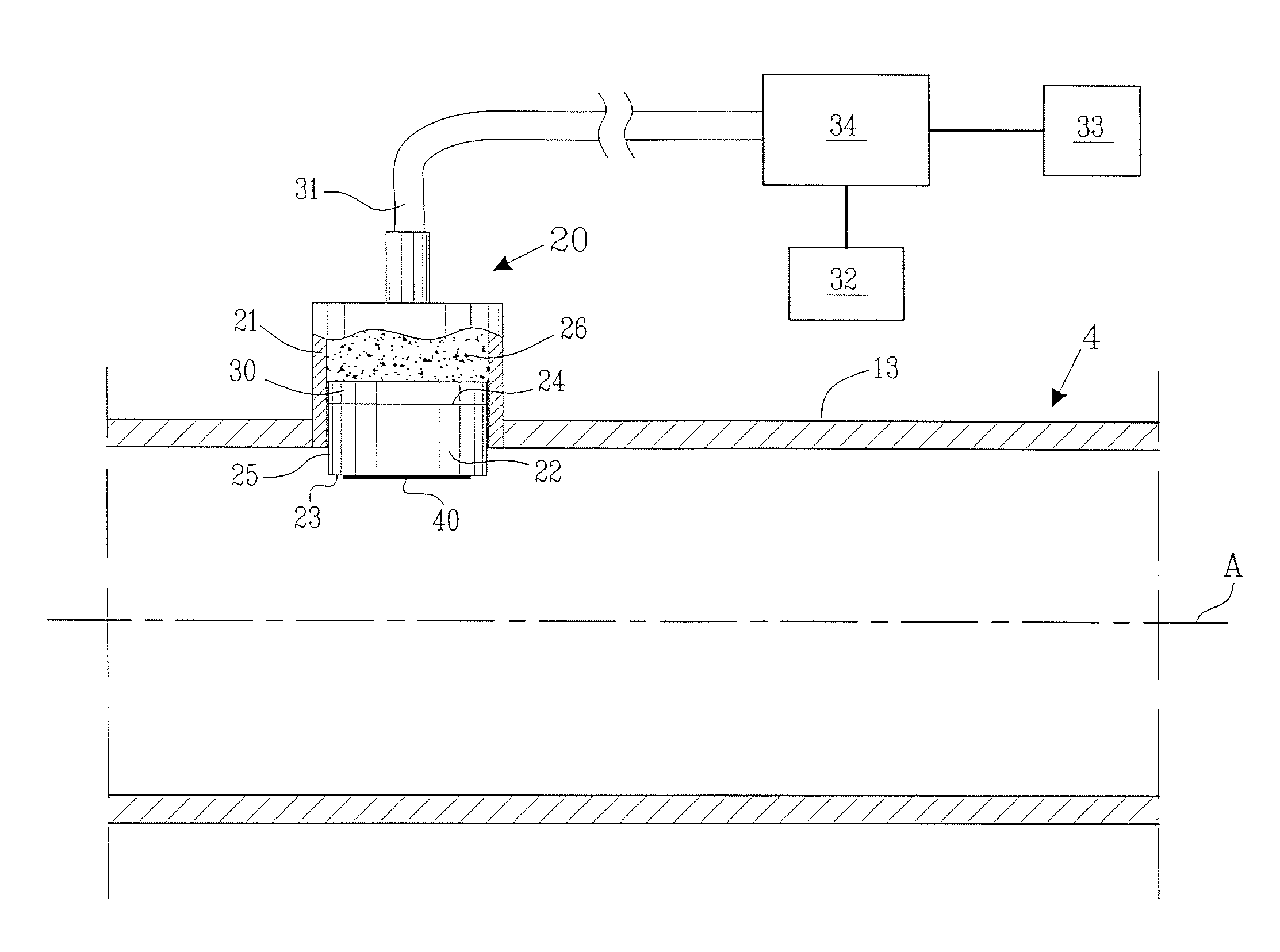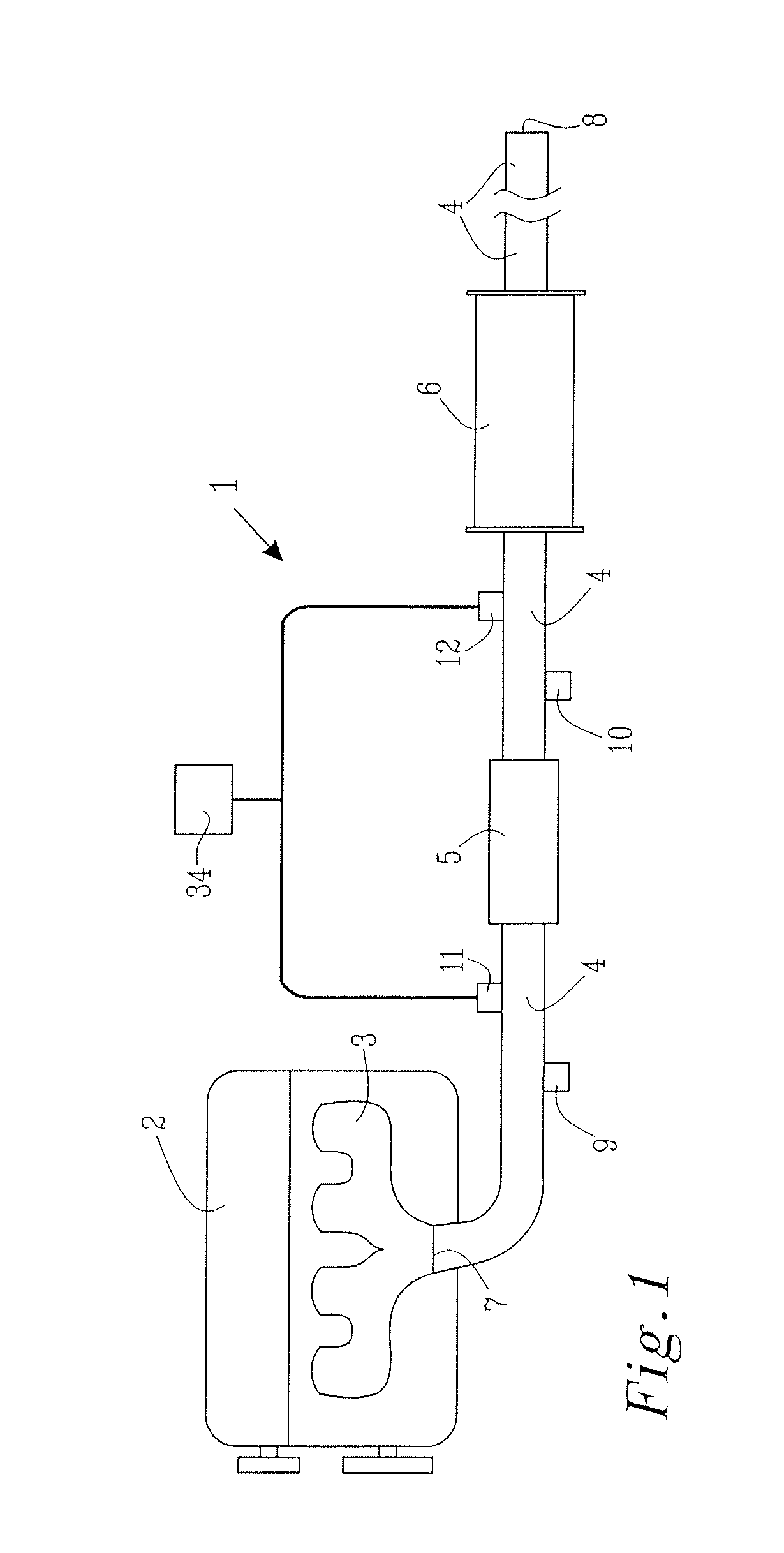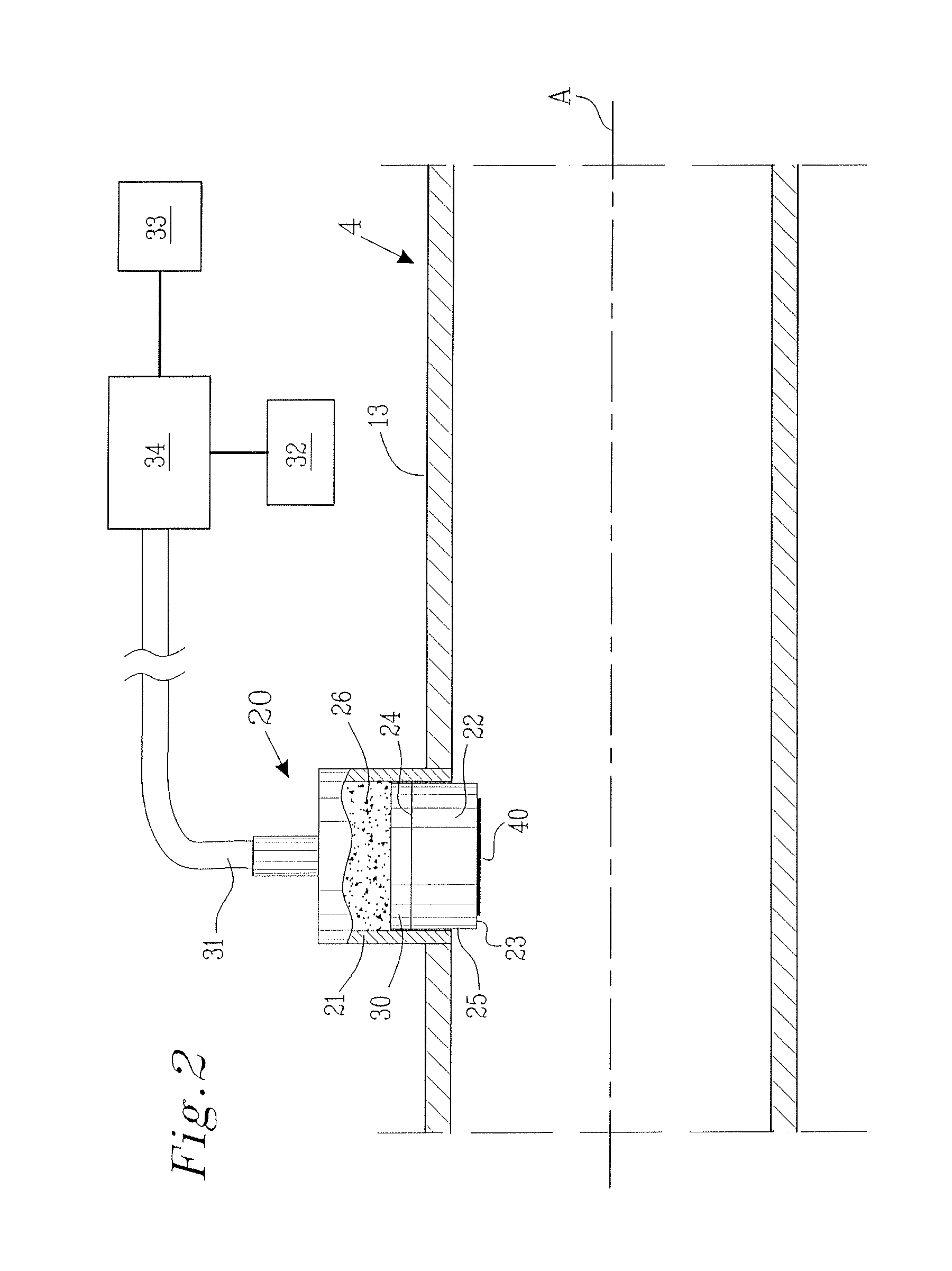Method and arrangement for detecting particles
- Summary
- Abstract
- Description
- Claims
- Application Information
AI Technical Summary
Benefits of technology
Problems solved by technology
Method used
Image
Examples
Embodiment Construction
[0027]FIG. 1 show a schematic illustration of an exhaust gas system 1 connected to a diesel engine 2 at an engine exhaust gas port 3. Such an exhaust gas system 1 is preferably used in vehicles, such as trucks, boats, cars, trains, aircrafts or any other appropriate vehicle. The exhaust gas system 1 comprises, in the shown embodiment, of an exhaust gas pipeline 4, a diesel particle filter 5 and a muffler 6. The exhaust gas pipeline 4 comprises an inlet opening 7, through which the exhaust gas from the engine 2 enters the exhaust gas system 1, and an outlet opening 8, through which the exhaust gas exit the exhaust gas system 1 to the ambient air. A first and a second pressure sensor 9, 10 are arranged on respective side of the diesel particle filter 5. Additionally are a first and a second soot particle arrangement 11, 12, according to the present invention, arranged on respective side of the diesel particle filter 5. Although the present invention is herein described with reference ...
PUM
 Login to View More
Login to View More Abstract
Description
Claims
Application Information
 Login to View More
Login to View More - R&D
- Intellectual Property
- Life Sciences
- Materials
- Tech Scout
- Unparalleled Data Quality
- Higher Quality Content
- 60% Fewer Hallucinations
Browse by: Latest US Patents, China's latest patents, Technical Efficacy Thesaurus, Application Domain, Technology Topic, Popular Technical Reports.
© 2025 PatSnap. All rights reserved.Legal|Privacy policy|Modern Slavery Act Transparency Statement|Sitemap|About US| Contact US: help@patsnap.com



